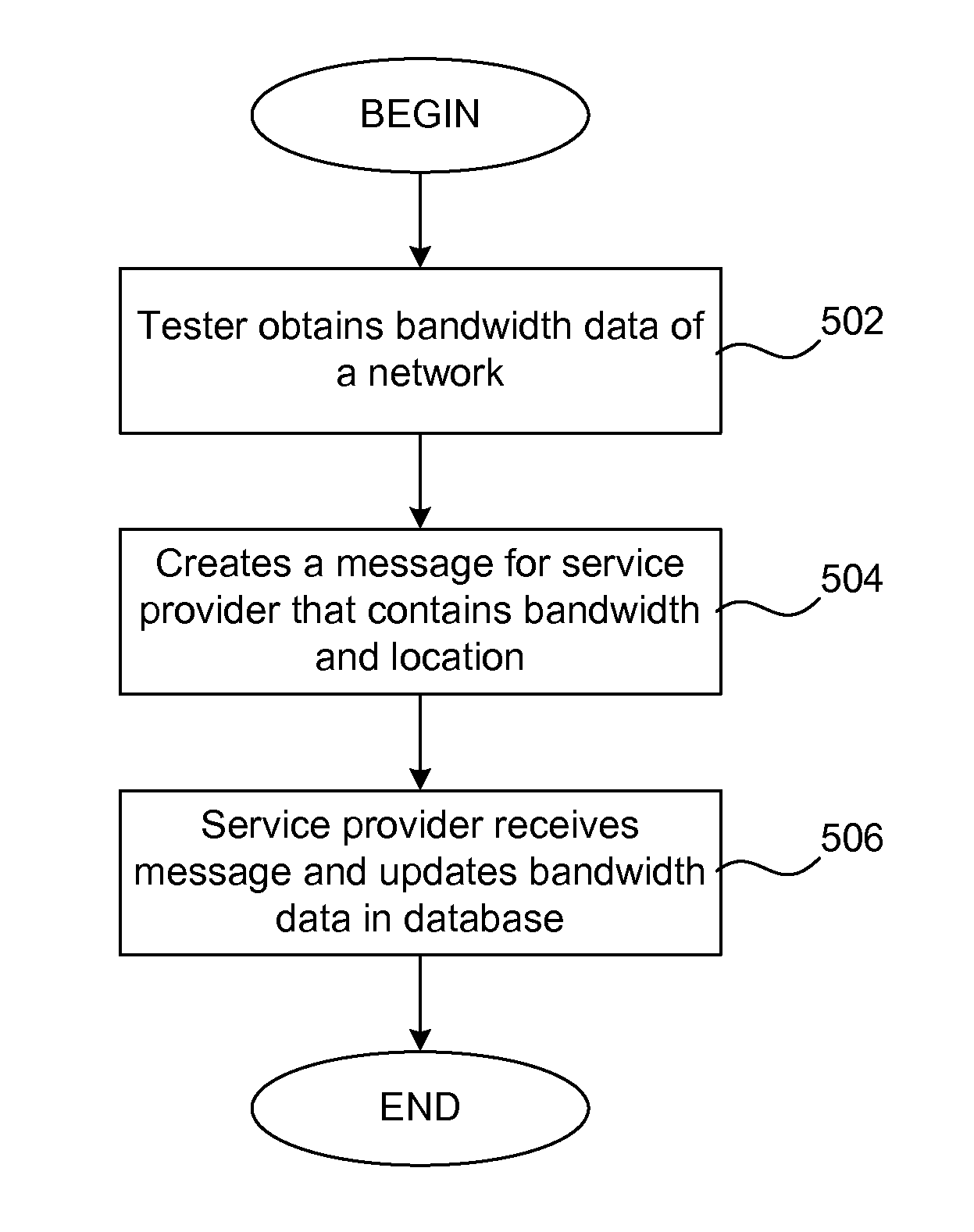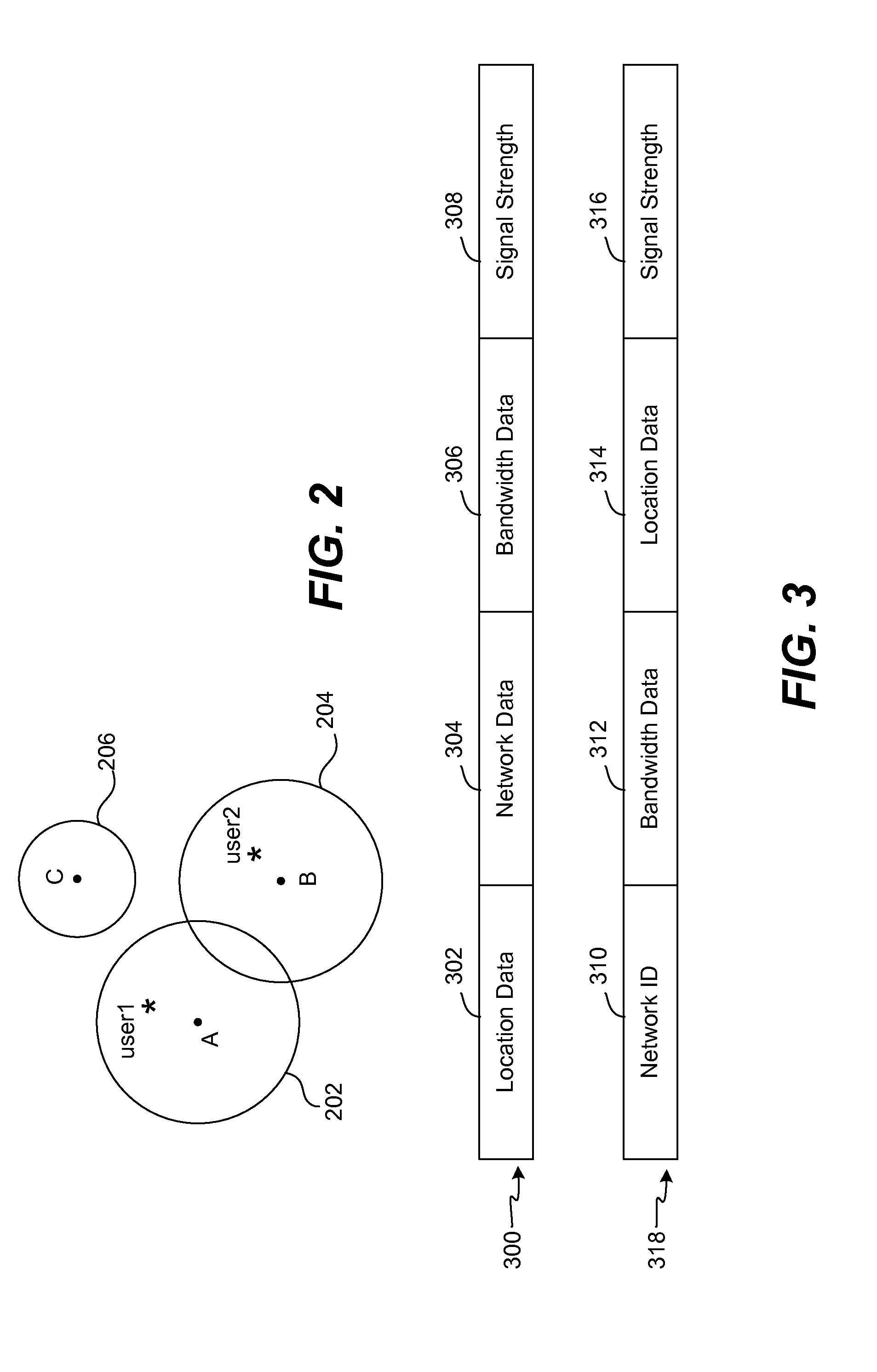Agent-based bandwith monitoring for predictive network selection
a technology of agent-based bandwith and network selection, applied in computing, digital computers, instruments, etc., can solve the problems of consuming a significant amount of battery power, performing by the device, and not being available in many places, so as to achieve the best throughput or pipe performance, the effect of greater pipe performance and higher bandwidth
- Summary
- Abstract
- Description
- Claims
- Application Information
AI Technical Summary
Benefits of technology
Problems solved by technology
Method used
Image
Examples
Embodiment Construction
[0020]Example embodiments of an application security process and system according to the present invention are described. These examples and embodiments are provided solely to add context and aid in the understanding of the invention. Thus, it will be apparent to one skilled in the art that the present invention may be practiced without some or all of the specific details described herein. In other instances, well-known concepts have not been described in detail in order to avoid unnecessarily obscuring the present invention. Other applications and examples are possible, such that the following examples, illustrations, and contexts should not be taken as definitive or limiting either in scope or setting. Although these embodiments are described in sufficient detail to enable one skilled in the art to practice the invention, these examples, illustrations, and contexts are not limiting, and other embodiments may be used and changes may be made without departing from the spirit and sco...
PUM
 Login to View More
Login to View More Abstract
Description
Claims
Application Information
 Login to View More
Login to View More - R&D
- Intellectual Property
- Life Sciences
- Materials
- Tech Scout
- Unparalleled Data Quality
- Higher Quality Content
- 60% Fewer Hallucinations
Browse by: Latest US Patents, China's latest patents, Technical Efficacy Thesaurus, Application Domain, Technology Topic, Popular Technical Reports.
© 2025 PatSnap. All rights reserved.Legal|Privacy policy|Modern Slavery Act Transparency Statement|Sitemap|About US| Contact US: help@patsnap.com



